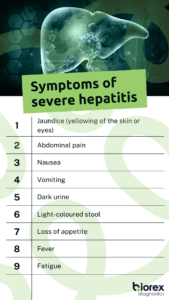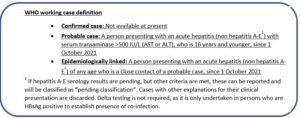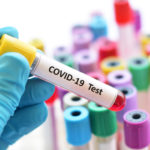
The Mysterious Child Hepatitis Outbreak
The Mysterious Child Hepatitis Outbreak
There has been an outbreak of severe acute hepatitis of unknown aetiology in children since 5th April 2022. 1,010 probable cases have been reported from 35 countries in five WHO Regions, as of 8th July 2022. Three additional countries have reported cases, however, as they are pending classification, they have not been included in the probable case count. On reviewing the probable cases, 2% (n=22) of children have died and 5% (n=46) of children have required liver transplants. There are possible links between severe acute hepatitis and a couple of respiratory illnesses, including the adenovirus with 21% (n=209) children testing positive by PCR, SARS-CoV-2 with 8% (n=78) children testing positive by PCR, however data on serology results are limited 1.
The Distribution of Probable Cases
Figure one below highlights the distribution of probable hepatitis cases in children, with 48% (n=484) of the global probable cases reported from the WHO European Region (21 countries) of which 27% (n=272) of the global probable cases have been reported in the United Kingdom and Ireland. 43% (n=435) of the global probable cases have been reported in the Regions of the Americas of which 33% (n=334) of the global probable cases have been reported in the United States of America 1. Whilst seventeen countries have reported more than 5 probable cases, it is likely that the actual number of cases may be underestimated, partly due to the limited enhanced surveillance systems in place. The latest assessment conducted by the UN health agency found that the risk of this paediatric hepatitis outbreak spreading is ‘moderate’ 2.
Figure 1. Distribution of probable cases of severe acute hepatitis of unknown aetiology in children by country, as of 8 July 2022 (n=1,010), 5 PM CEST 1

Symptoms
Figure 2: Symptoms of severe acute hepatitis in children 3

Laboratory Testing of Cases
Laboratory testing has excluded the hepatitis A-E viruses, according to the WHO working case definition (figure 3) 1. The aetiology and pathogenetic mechanisms are still under investigation. There’s a possible correlation between the adenovirus and acute hepatitis in children, but all other hypotheses and co-factors are being investigated 4.
In 52% (193/368) of cases in the European Region, the adenovirus was detected, however it was only detected in 9% (5/58) of cases in Japan. It is challenging to fully assess the extent of the adenovirus in these cases due to the limited adenovirus surveillance in most countries. SARS-CoV-2 has been detected in some cases, however the data of the serology results is limited 1.
Figure 3: WHO working case definition of severe acute hepatitis of unknown aetiology 1

Hepatitis Testing Cannot Wait
Children presenting with symptoms of acute hepatitis cannot wait to be tested to rule out viral hepatitis A-E. Testing alanine aminotransferase (ALT) and aspartate aminotransferase (AST) levels will enable the extent of liver damage to be determined.
At Biorex, we offer a range of tests to aid in uncovering the mysterious child hepatitis outbreak:
- Hepatitis A (ELISA)
- Hepatitis B (ELISA)
- Hepatitis C (ELISA)
- Hepatitis D (ELISA)
- Hepatitis E (ELISA)
- Alanine Aminotransferase (ALT)
- Aspartate Aminotransferase (AST)
- COVID-19 (Rapid)
- COVID-19 (ELISA)
References
- Severe acute hepatitis of unknown aetiology in children – Multi-country. https://www.who.int/emergencies/disease-outbreak-news/item/2022-DON400 (accessed 15 July 2022).
- United Nations. Mystery child hepatitis outbreak passes 1,000 recorded cases, says WHO. https://news.un.org/en/story/2022/07/1122442 (accessed 18 July 2022).
- Government of Canada. Acute severe hepatitis in children. https://www.canada.ca/en/public-health/services/diseases/acute-hepatitis-children.html (accessed 18 July 2022).
- European Centre for Disease Prevention and Control (ECDC). Joint ECDC-WHO Regional Office for Europe Hepatitis of Unknown Origin in Children Surveillance Bulletin. https://cdn.ecdc.europa.eu/novhep-surveillance/ (accessed 21 July 2022).







